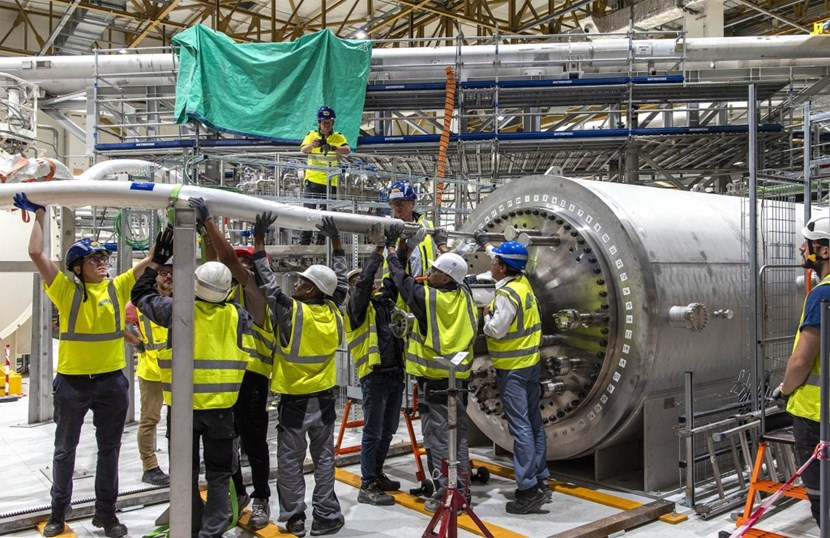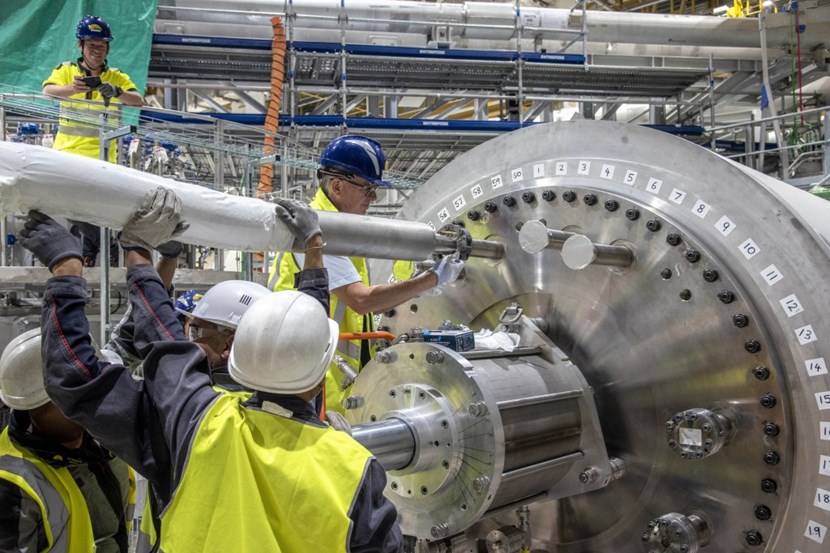ITER NEWSLINE
-
Cryopumps
Preparing for the cold tests
Cryopumps | Preparing for the cold tests
Before being delivered to ITER, the torus and cryostat cryopumps are submitted to a comprehensive series of factory acceptance tests. This is not sufficient, however, to guarantee that these most complex of components, designed to operate at temperatures as low as 4.5 K and as high as 200 °C, will perform as expected. To remove all uncertainty, a test facility was created within the ITER cryoplant, allowing each pump to be tested through a whole range of operating temperatures and pumping scenarios.On 19 June, a "cryojumper," was installed to connect the test facility to the cryoplant's fluids distribution unit.

The ''cryojumper'' is equipped with a 'magic' flange which will allow easy insertion and removal every time a new cryopump is tested.
"A cryojumper is not just a pipe and a flange," explains Alessandra Iannetti, a group leader in the ITER Vacuum System Project. "It is a sophisticated component that transports helium at the temperature of outer space while keeping thermal losses to a minimum. It is equipped with a 'magic' flange, called a 'Johnston coupling,' which will allow easy insertion and removal every time we test a new cryopump."
The cryopump that will undergo the first round of cold tests is a pre-production component that will not be installed in the ITER machine. By cold testing it thoroughly however, the vacuum team will be able to refine the procedures that will be applied to the actual torus and cryostat cryopumps. Testing will verify the pump's performance in operational conditions, something that has not been done yet.
The cryopumps will be cycled exactly as they will be cycled during actual operation, going through all the different temperature steps from 4 K (minus 269 °C) to 300 K (ambient temperature), each step corresponding to the capture of specific gas molecules. Even higher temperature—up to 470 K (200 °C)—will be required for the deep cleaning maintenance phases.

ITER Vacuum System Project Leader Robert Pearce (center) is seen here adjusting the ''cryojumper'' flange to the preproduction cryopump. Cold testing operations are not anticipated before May 2025, following the integrated commissioning of the ITER cryoplant.
Whether all eight cryopumps will be tested is not yet decided. The decision will depend in part on the availability of the cryogenic distribution system, which will be partly mobilized by the testing of the machine's toroidal field coils.
Cold testing an ITER cryopump is a two- to three-month long procedure. As the integrated commissioning of the cryoplant is set to begin early next year, the testing of the pre-production pump is not anticipated before May 2025.
return to the latest published articles



